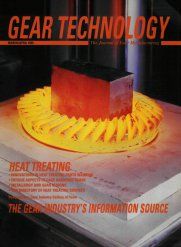In his Handbook of Gear Design (Ref.1), Dudley states (or understates): "The best gear people around the world are now coming to realize that metallurgical quality is just as important as geometric quality." Geometric accuracy without metallurgical integrity in any highly stressed gear or shaft would only result in wasted effort for all concerned - the gear designer, the manufacturer, and the customer - as the component's life cycle would be prematurely cut short. A carburized automotive gear or shaft with the wrong surface hardness, case depth or core hardness may not even complete its basic warranty period before failing totally at considerable expense and loss of prestige for the producer and the customer. The unexpected early failure of a large industrial gear or shaft in a coal mine or mill could result in lost production and income while the machine is down since replacement components may not be readily available. Fortunately, this scenario is not common. Most reputable gear and shaft manufacturers around the world would never neglect the metallurgical quality of their products.
